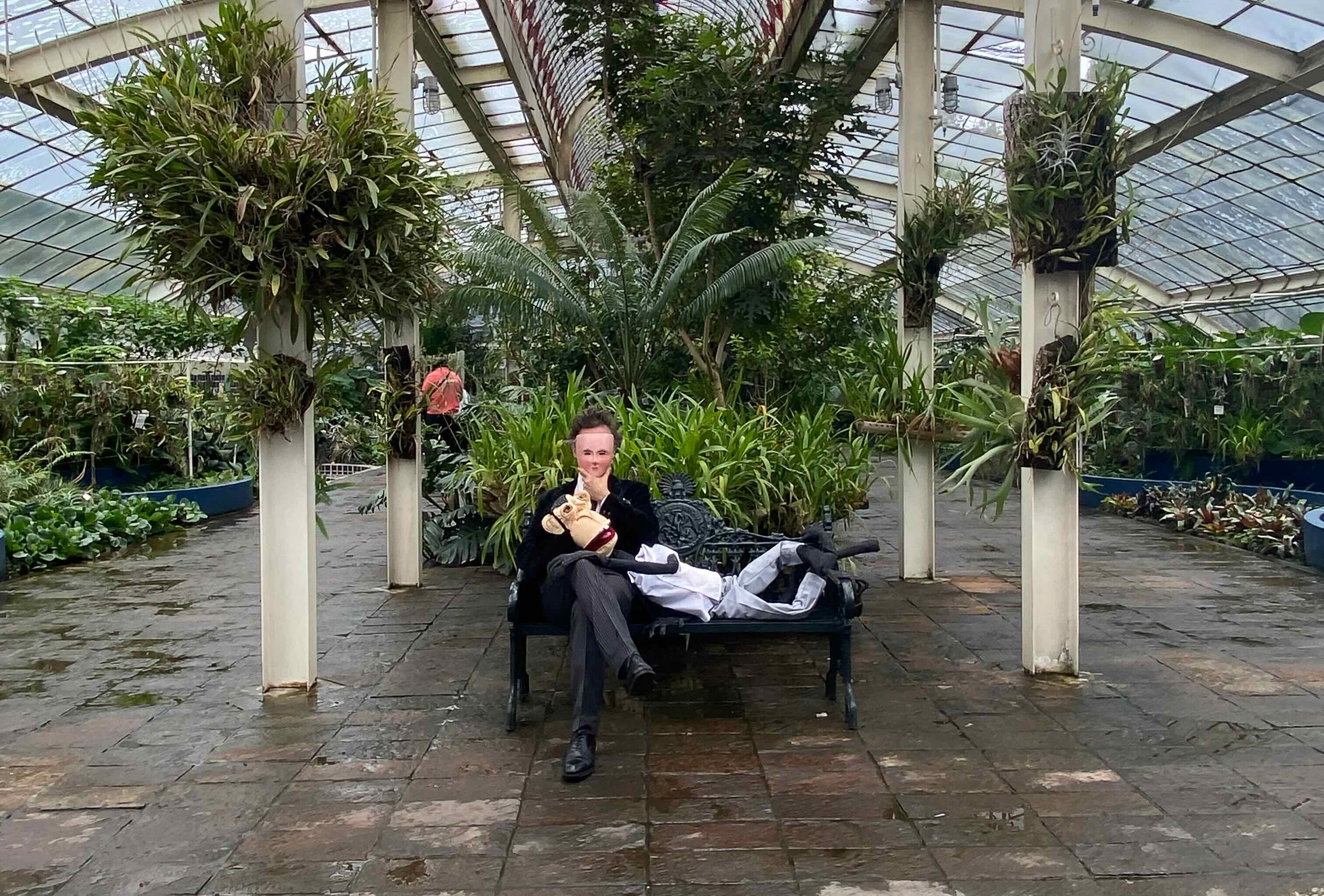
Wendy Cabrera Rubio
La señorita eugenesia y otros cuentos
Exhibition
-> Oct 12 2024 – Dec 11 2024
As part of the festivities of Our Lady of Pilar, Patroness of the Spanish Civil Guard, the Kingdom of Aragon and the City of Zaragoza, October 12 of this year, opens at General Expenses gallery in Mexico City La señorita eugenesia y otros cuentos, a solo exhibition by Wendy Cabrera Rubio (1993), Mexican artist. This is the artist's first solo exhibition since her show in Tacoma, Washington in early 2024 also curated by Jairo Hoyos Galvis; where she collaborates with artists Patricia Rubio, Mauricio Guillen, Eugenia Martinez, Silvestre Borgatello, Clemente Castor, Sbethlanna Gonzalez, Antonio Ponce, Javier Fresneda y José Luis Cuevas.
La señorita eugenesia y otros cuentos, a title taken from the 1919 Mexican pedagogical publication, is made up of a short film, a hand-colored photographic series, two ceramic vases, a large candle with the night sky of the dawn of October 12, 1492 embroidered in gold, a sausage boat and two hybrid pieces between photography and embroidery. This exhibition is part of and the culmination of a continuous artistic and curatorial work where all the pieces were produced by the artist ex profeso and in parallel, collaborating with each of the different participants.
Central to the themes and tropes of this exhibition is the photographic discipline and the paradox between its artisanal processes and its function as a principle of truth. This paradox allows the photographic discipline to link art with science; a central phenomenon in the artist's reflection and whose ethical, epistemological and aesthetic implications are developed in the different pieces of the exhibition. The textile medium and the techniques of embroidery and appliqué, constants in Cabrera Rubio's production, are taken up again here, both to expose the blurred limits between the regimes in which the image unfolds and to embroider finely on the pre-financial economy.
La señorita Eugenesia y otros cuentos is a playful visual and dreamlike stroll through some of the roughest paths of the contemporary social and political field. Like an obstinate Little Red Riding Hood, Cabrera Rubio does not stop in front of the indeterminate immensity of her own goals.
–Pablo Arredondo Vera
Wendy Cabrera Rubio explores the performativity of historical materials using research and fiction to create a theatrical space that allows her to make visible the relationships between aesthetics and ideology present in the mechanisms of production and distribution of images. Formally, she is exploring synthetic felt, a very accessible textile used in handicrafts. Due to its common use in domestic economies and its “playful” character, this material allows her to move away from the traditional visualizations of the archive, which allows her to show contradictions and generate links between the past and the present through discursive updating.
The artist belongs to a generation that grew up parallel to the signing of the North American Free Trade Agreement (NAFTA) and the war against drug trafficking. The former gave them access to a global culture and a series of governments that financially stimulated art with Mexicanist echoes, as well as imported cultural products, and the latter marked the need to critique the symbols and policies of the national culture that led to such horrors.
Cabrera Rubio's work arises from an interest in showing the fabric that unites images and instrumentality and frees representations from a linear narrative. He works with history, but not in a historicist sense, but by dating the echoes that remain in the present. To do so, he exposes things as something accessible to touch and sensibility. The objects he works with have interchangeable parts that are activated by their theatrical and ventriloquist aspect. Thus, the apparent innocence of the embroidered figures of penguins, turtles and historical characters versioned as puppets, becomes the artist's commitment to elucidate and clarify key aspects of the postcolonial society in which we live.
— General Expenses